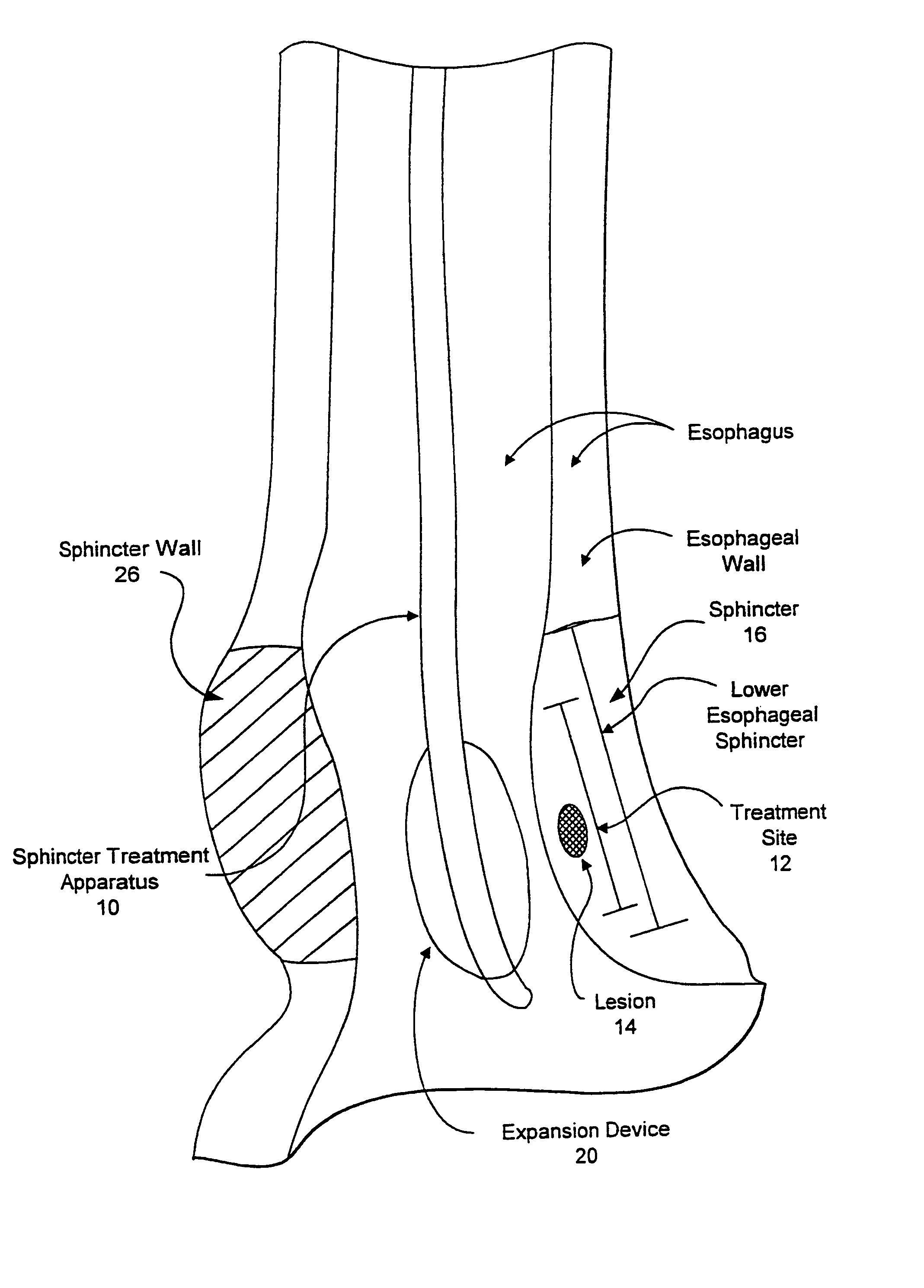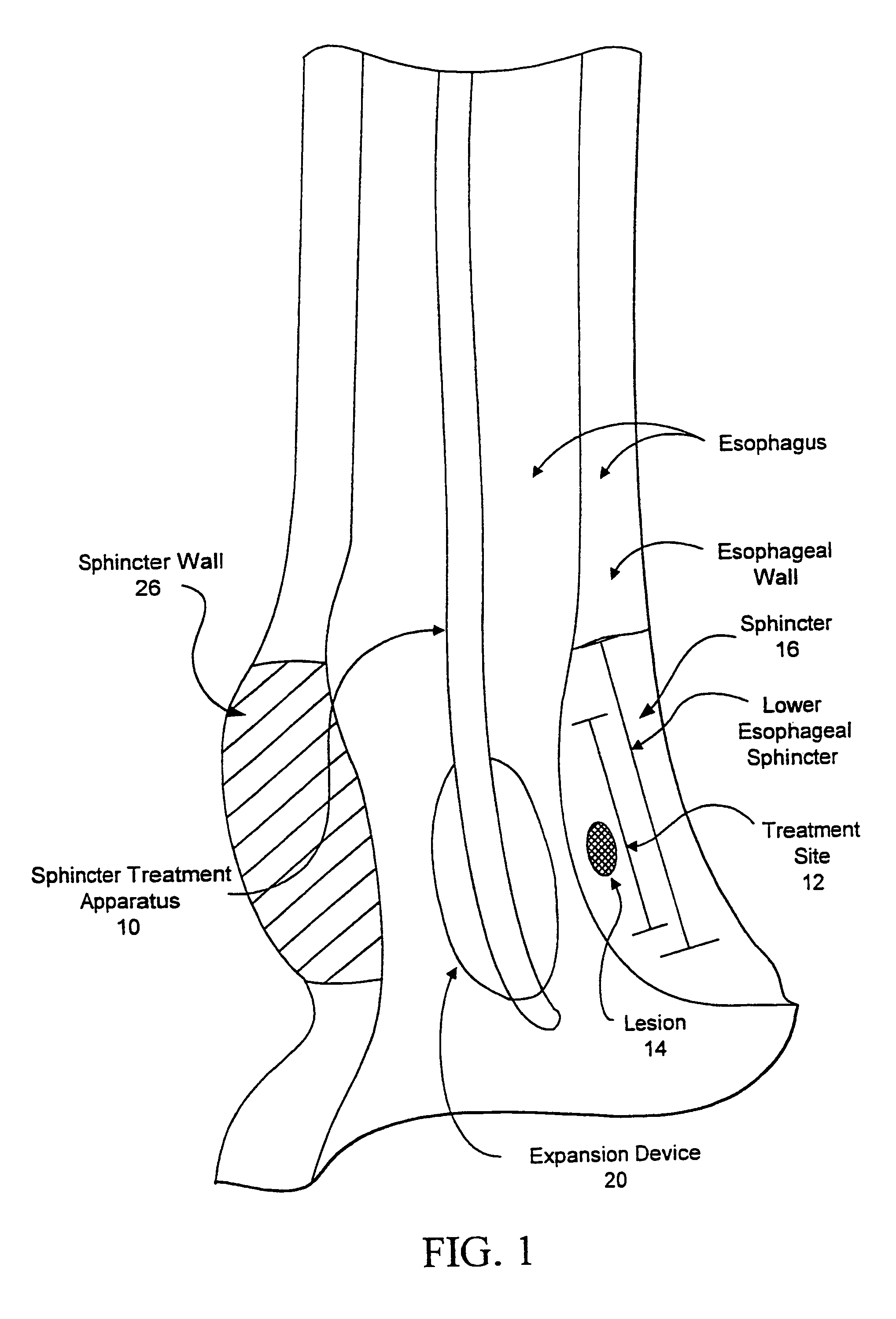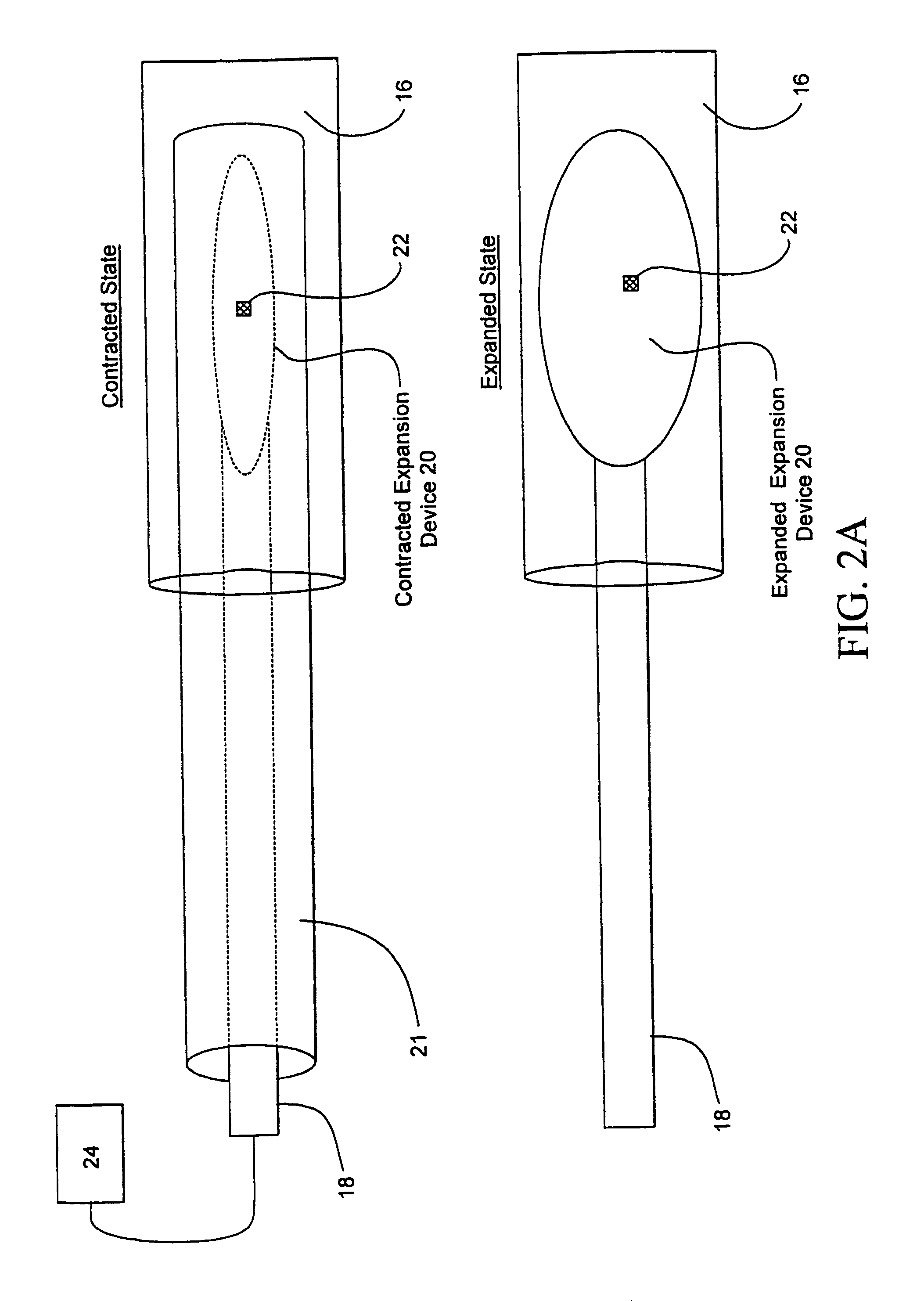Sphincter treatment apparatus
a technology for sphincter and apparatus, applied in the field of sphincter apparatus, can solve the problems of esophageal obstruction, significant blood loss and perforation of esophagus, more severe complications, etc., and achieve the effect of enhancing the engagement of the introduction member
- Summary
- Abstract
- Description
- Claims
- Application Information
AI Technical Summary
Benefits of technology
Problems solved by technology
Method used
Image
Examples
Embodiment Construction
[0067]Referring now to FIGS. 1 and 2, one embodiment of sphincter treatment apparatus 10 that is used to deliver energy to a treatment site 12 to produce lesions 14 in a sphincter 16, such as the lower esophageal sphincter (LES), comprises a flexible elongate shaft 18, also called shaft 18, coupled to a expansion device 20, in turn coupled with one or more energy delivery devices 22. Energy delivery devices 22 are configured to be coupled to a power source 24. The expansion device 20 is configured to be positionable in a sphincter 16 such as the LES or adjacent anatomical structure, such as the cardia of the stomach. Expansion device 20 is further configured to facilitate the positioning of energy delivery devices 22 to a selectable depth in a sphincter wall 26 or adjoining anatomical structure. Expansion device 20 has a central longitudinal axis 28 and is moveable between contracted and expanded positions substantially there along. This can be accomplished by a ratchet mechanism as...
PUM
| Property | Measurement | Unit |
|---|---|---|
| length | aaaaa | aaaaa |
| conductive surface area | aaaaa | aaaaa |
| diameter | aaaaa | aaaaa |
Abstract
Description
Claims
Application Information
 Login to View More
Login to View More - R&D
- Intellectual Property
- Life Sciences
- Materials
- Tech Scout
- Unparalleled Data Quality
- Higher Quality Content
- 60% Fewer Hallucinations
Browse by: Latest US Patents, China's latest patents, Technical Efficacy Thesaurus, Application Domain, Technology Topic, Popular Technical Reports.
© 2025 PatSnap. All rights reserved.Legal|Privacy policy|Modern Slavery Act Transparency Statement|Sitemap|About US| Contact US: help@patsnap.com



